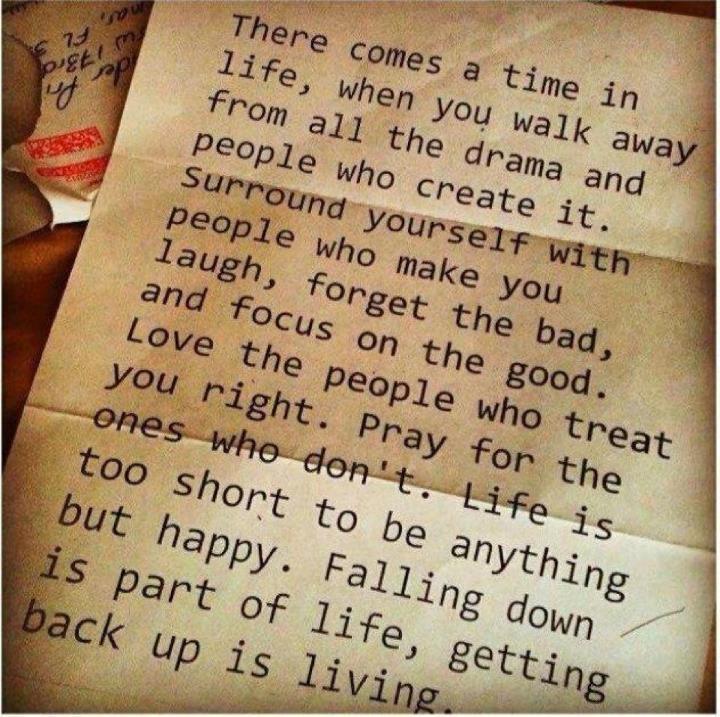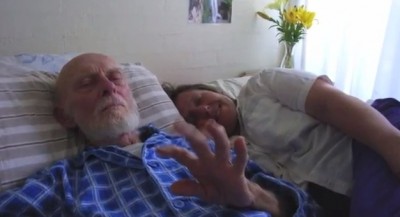ACLU says faith-based hospitals jeopardize reproductive, end-of-life care
By Aaron Corvin
Hospitals are supposed to be places of healing, but Washington’s hospitals are becoming places of conflict between religion and government over health care services.
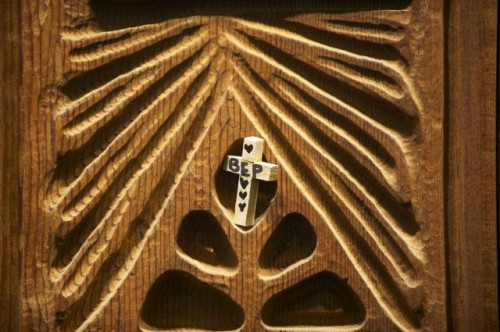 The state’s American Civil Liberties Union is questioning whether health care regulatory agencies and public hospital districts should grant approval to faith-based hospitals — primarily Catholic — that don’t offer reproductive and end-of-life services that are widely available at secular hospitals. In some rural areas of the state, the ACLU says, hospital consolidations and mergers could leave communities only with Catholic hospitals which refuse, based on Catholic religious beliefs, to provide such services.
The state’s American Civil Liberties Union is questioning whether health care regulatory agencies and public hospital districts should grant approval to faith-based hospitals — primarily Catholic — that don’t offer reproductive and end-of-life services that are widely available at secular hospitals. In some rural areas of the state, the ACLU says, hospital consolidations and mergers could leave communities only with Catholic hospitals which refuse, based on Catholic religious beliefs, to provide such services.
“We’re very troubled by what’s going on,” said Sarah Dunne, legal director for the Seattle-based American Civil Liberties Union of Washington Foundation. The ACLU is pressing its case on several fronts, including the possibility of legal action. The group also is challenging proposed partnerships between Vancouver-based PeaceHealth and other health care providers.
PeaceHealth, a Catholic-sponsored health system, is pushing back. The nonprofit health care giant — Clark County’s top private employer — says its partnerships with public hospital districts and others are well within legal parameters. And the organization stands by its right to deny certain services based on its religious principles, officials say, as it continues a long history of improving health care in a variety of communities.
“All we have to point to is our record of service,” said Jenny Ulum, a PeaceHealth spokeswoman.
Later this year, the proposal by PeaceHealth and Colorado-based Catholic Health Initiatives to join forces will undergo a public review and decision by state health regulators. The companies are submitting paperwork, and critics say they plan to weigh in.
The controversy arises amid dizzying political and economic changes in health care. Consolidation has become a health care industry norm. And federal health care reform has heightened tension between the Obama administration and Catholic-based health providers over insurance coverage for contraception.
Not all religiously affiliated hospitals operate in the same way or with the same policies. In PeaceHealth’s case, the nonprofit is a church ministry authorized by the archbishops of Portland and Seattle, according to Ulum. “The church’s authority pertains to our Catholic identity,” she said, “which basically has oversight over faith and morals.” However, PeaceHealth also is a nonprofit corporation with its own governing board and bylaws, Ulum said. PeaceHealth owns its property and facilities, she said, and is responsible for business operations and its health care work.
Legal arguments clash
The ACLU cites data showing that several merger proposals this year would decrease secular hospital beds in the state, in some cases handing a monopoly on health care services to religiously affiliated institutions.
As a result, the ACLU in Washington has launched efforts to curb what it sees as an alarming trend. That includes opposing arrangements between PeaceHealth and taxpayer-funded public hospital districts in San Juan and Skagit counties. The group argues the tax dollars should not be used to subsidize health services limited by PeaceHealth’s religious policies.
It’s also urging public hospital officials to renegotiate their relationships with PeaceHealth in light of the nonprofit’s proposed partnership with Catholic Health Initiatives.
The ACLU argues CHI is even more restrictive in its policies than PeaceHealth. Partly because of its larger size and influence, they say, CHI will likely seek to impose its religious doctrines in communities served by PeaceHealth.
But PeaceHealth officials say the nonprofit and CHI already have agreed that neither of their respective patient-care ethical policies will change under their proposed affiliation, which will be structured as an equal partnership. What’s more, they say, their partnership is intended to boost the quality of care they provide and to strengthen their financial footing to serve growing populations.
The situation in San Juan County exemplifies the conflict. Under an arrangement with the San Juan County Public Hospital District No. 1, PeaceHealth built Peace Island Medical Center, which opened last year. The new facility was built for $30 million, with the community covering about a third of the cost using private funds and with PeaceHealth footing the rest of the construction bill. And PeaceHealth runs the hospital under a contract with the district, which uses its property-tax levy to partially subsidize PeaceHealth’s operations.
Ulum, the PeaceHealth spokeswoman, said the hospital district transferred about $1.2 million in annual property-tax revenue it had used to operate its previous clinic to PeaceHealth. Nearly all of those property-tax dollars enable PeaceHealth to cover the costs of providing charity care and of maintaining a 24-hour emergency department, Ulum said. There was no change in the tax rate, she added.
Lenore Bayuk, the San Juan Hospital District’s commission chairwoman, said PeaceHealth’s entry into the community, with modern facilities, was crucial. Previously, the district struggled to cover its costs at the old clinic, Bayuk said. With PeaceHealth, she said, the district is on sounder financial footing. “We have a cancer treatment center which we didn’t have before,” Bayuk added, noting many other improvements.
But critics say the situation isn’t so tidy. Those include Monica Harrington, a former Seattle technology executive who opposes PeaceHealth’s contract with the San Juan County public hospital district. She cited the fact that San Juan County health officials have agreed to review concerns raised by some residents about health care cost and access issues, including at Peace Island Medical Center.
“We effectively traded lower-priced unrestricted health care in an increasingly dilapidated building for much, much higher-priced, religiously restricted care in a beautiful, art-filled facility,” Harrington wrote in an email to The Columbian.
The ACLU acknowledges the improvements made under PeaceHealth’s arrangement with the San Juan Hospital District. But the organization argues the contract between PeaceHealth and the district violates the Washington Constitution and the state’s Reproductive Privacy Act. “As a government entity, the hospital district should not subsidize religious facilities that discriminate against women’s fundamental rights,” Kathleen Taylor, executive director of the ACLU’s operation in Seattle, wrote in a letter to district officials.
PeaceHealth says the ACLU is wrong in its legal interpretation. There’s nothing in the law prohibiting public-private partnerships between hospital districts and private health care providers that maintain religious affiliations, the nonprofit says. The purpose of PeaceHealth is to provide “important health care services, not the advancement of religion,” according to its legal analysis. “To suggest otherwise is inconsistent with more than a century of collaboration in Washington between the state and religiously affiliated charities, health providers and others.”
But the ACLU says its concerns go beyond PeaceHealth’s arrangements with local public hospital districts.
In her letter to the San Juan County Hospital District, Taylor takes umbrage with PeaceHealth’s proposed partnership with CHI, which operates in 17 states and includes 78 hospitals. The venture between PeaceHealth and CHI would combine seven Catholic Health Initiatives hospitals in Washington and Oregon with nine PeaceHealth hospitals in Washington, Oregon and Alaska.
Although PeaceHealth has argued it will maintain its own ethical policies in its relationship with CHI, Taylor wrote in her letter, “the lack of any legally binding document to that effect fails to protect against the possibility” of additional restrictions on access to reproductive and end-of-life services.
In their concern about how PeaceHealth and CHI will interact, the ACLU and other critics also cite Kentucky Democratic Gov. Steve Beshear’s effort last year to block a proposed merger between University of Louisville Hospital and Catholic Health Initiatives. Beshear opposed the merger in part out of concern that the deal would reduce access to reproductive services. But after further negotiations, the deal went through this month and included a provision that U of L Hospital will remain independent of the Catholic health directives followed by CHI.
Closer to home, PeaceHealth says the concern about its potential relationship with CHI is a nonstarter.
In a letter to the San Juan County hospital district, Sister Andrea Nenzel, chair of PeaceHealth’s board, wrote: “(Catholic Health Initiatives) and PeaceHealth have already agreed that our hospitals, including Peace Island Medical Center, will not change their ethical policies regarding patient care that have been in effect for as long as 40 years.”
Diverging from mainstream?
PeaceHealth officials emphasize the nonprofit’s health care mission is spiritual and expansive, serving the poor and caring for those who are unable to pay for services. Its faith foundation means that PeaceHealth also carries a set of ethical policies that govern the medical services it chooses to provide. Those include:
• It does not permit abortion except to save the life of the mother.
• Contraceptive decisions, including tubal ligations and vasectomies, are between the patient and the provider, and are based on medical necessity.
• Emergency contraception is provided to women who are victims of sexual assault. However, PeaceHealth requires a negative pregnancy test before it will dispense emergency contraception.
• RU-486, which induces abortion, is not dispensed at PeaceHealth.
• With respect to end-of-life care, the nonprofit honors advance directives.
• Physician-assisted suicide is prohibited — even in states, including Washington, where it is legal — on PeaceHealth time and in the nonprofit’s facilities or any facility leased from PeaceHealth.
“In the vast majority of cases,” said Ulum, the PeaceHealth spokeswoman, there’s no “dogmatic policy that supersedes” the decision-making that goes on between a doctor and a patient.
Before Vancouver-based Southwest Washington Medical Center became part of PeaceHealth’s system in 2010, the hospital had been secular since the late 1960s, according to Ken Cole, a PeaceHealth spokesman. Still, the secular hospital honored its Catholic heritage, which dates to the hospital’s founding in 1858 by Mother Joseph of the Sacred Heart.
None of the ethical policies that Southwest, as a secular institution, followed in providing medical services changed when the hospital joined the Catholic-sponsored PeaceHealth network, according to Cole. “We were already in alignment with the system,” he said.
Of course, both organizations have made numerous other changes to solidify their affiliation, Cole said, including updating their clinical procedures.
‘Our conscience’
But critics see more gaps, “don’t ask, don’t tell” situations and slippery slopes in the policies of PeaceHealth and other religiously based health care companies than they do comprehensive services. And they cite examples in Puget Sound and across the nation where they believe that religiously based policies have interfered with patient rights and needs, and modern medicine.
“Who wants their doctor worrying about what a bishop thinks in the middle of a medical emergency?” said Harrington, the critic of PeaceHealth’s contract with the San Juan County public hospital district.
Harrington leads the Coalition for Health Care Transparency and Equity — the group arguing against the arrangement in San Juan County. She’s also co-chair of Washington Women for Choice.
Harrington has weighed in on issues of choice and access in a variety of ways, including submitting op-ed columns in the San Juan Islander newspaper. In one column, she wrote that she’s had “dozens of conversations with people who’ve had terrible experiences because of religious doctrine — from the doctor whose career was threatened as she worked to honor the wishes of a dying patient to a woman who found herself feeling abandoned and alone at Swedish (Medical Center in Seattle) with a midterm pregnancy that needed to end for her health and safety. Rarely do people feel comfortable speaking publicly.” Swedish entered into an affiliation with Providence Health & Services last year.
Harrington grew up in a Catholic family but said she has left the Catholic Church. The church’s view of health care “is diverging from mainstream health care,” she said, “and the people who are most at risk are reproductive-age women and people at the end of life.”
When asked whether the ACLU was girding for a lawsuit, Dunne said the group is exploring all of its options. For now, it continues to research the issue, including asking patients and medical providers to take a confidential survey intended to pinpoint cases in which health services have been denied on religious grounds.
For its part, PeaceHealth says it’s focused on its mission to expand services and deliver improved care to the populations it serves. “I don’t think there’s a lot of disagreement over the positive contribution (the) hospital is making,” said Ulum, the PeaceHealth spokeswoman. And PeaceHealth’s policies against providing certain services, Ulum said, are based on “our conscience as an organization.”
Complete Article HERE!
Unafraid, CLU theologian faces death
Jarvis Streeter is dying.
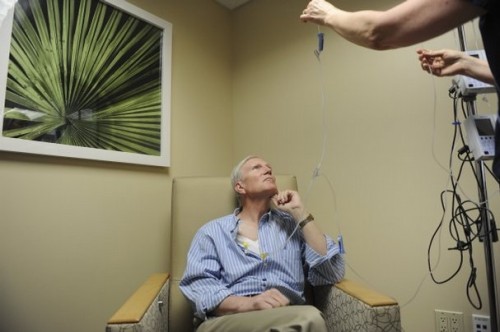 The religion professor at California Lutheran University delivers the news of the pancreatic cancer that has spread to his lungs and a prognosis he measures in months without emotion.
The religion professor at California Lutheran University delivers the news of the pancreatic cancer that has spread to his lungs and a prognosis he measures in months without emotion.
It’s the first thing he told two dozen students in hooded jackets and T-shirts on a January Tuesday. In the same tone he uses to discuss the interplay of science and theology, Streeter told them he made it to the first day of class at the Thousand Oaks campus. He said he wasn’t sure about the last day.
Wearing a sports coat that enveloped thinning arms, he said he would understand if they didn’t want a class that might ultimately deal with more than its title: faith and reason.
No one left.
“He very matter-of-factly said how it is. Just point blank,” said Lacie Goff, a senior from Chicago. “I think I’ve thought about dying more. We’re confronted with it every Tuesday and Thursday. I think it’s good.”
Streeter is a 63-year-old theologian and ordained Lutheran pastor who does not always act like either. With silver hair and the looks of a California surfer, he plays alternative rock on a blue-violet Fender guitar. He owns a blow-dart gun from Borneo that he sometimes uses for target practice.
He taught school in Kenya, studied at Yale and met his wife of 24 years while leading a graduate class at Southern Methodist University in Dallas. He just finished a draft of a book that dismisses intelligent design as junk theology and attempts to explain how belief in God and the big-bang theory fit in the same jigsaw puzzle.
About 18 months ago, Streeter woke up in his Santa Rosa Valley home feeling as if all the energy had seeped from his body. His doctor thought he might have an ulcer. He did. It was sitting underneath a tumor the size of a golf ball.
Two days later, surgeons removed his gall bladder, his duodenum and parts of his stomach, small intestine and pancreas. They removed all the cancer they could see, but the malignancy had spread to his lymph nodes.
“I just started thinking through it: OK, you’re going to die,” he said, explaining why the news about the cancer didn’t make him bitter. “What I asked was ‘Why not me?’ People get it. Am I so special I shouldn’t?”
He decided to deal with it as another part of life, the final part. He talks about it with anyone who asks: his students, his friends, his wife, his two stepdaughters.
He hides nothing. When the woman with the lap dog in a doctor’s waiting room wants to know why a newspaper photographer would take his picture, he turns to her. “I have cancer,” he said evenly.
To those who want more, he explains how different chemotherapy drugs keep the cancer from progressing, temporarily. Then the malignancy mutates. The cancer grows.
His doctor said the toxic chemicals fed through a port in his chest every 10 days seem to be working for now. He said statistics that show how long most people survive with an incurable cancer can’t be used to predict how long Streeter will live. If they could, he’d already be gone.
“A person is never a statistic,” said Dr. Martin Palmer, a UCLA oncologist.
But because he is on his third regimen of chemo, Streeter thinks his time may be running out.
The ifs could hang in the air like a death sentence. His friends say that hasn’t happened.
“I think with his attitude and the way he has communicated with other people around him, it’s allowed us to focus on enjoying every day with him as opposed to dwelling on the loss,” Hengst said.
Goodbye tour
Susan Streeter took her husband to a Bruce Springsteen concert in December. They went on a cruise to the Caribbean in January. But he doesn’t worry much about making checkmarks on a final litany of to-dos. His bucket list is dominated by relationships.
About 150 friends from school and a Shakespeare company that he supports came to a surprise party planned by his wife. A bagpiper played. So did a rock band. People stood up and told stories. Streeter hugged everyone.
“It’s the greatest gift anyone could give you: taking the time and effort to see me,” he said.
His days are like that, too. His friends see their conversations and dinners as a chance to spend more time talking about religion, science and their love of Shakespeare. But in a sense, it’s as if his memorial service has been bumped ahead of his death.
“Sometimes, he refers to it as the long goodbye tour,” said his friend Michael Arndt. “He’s still fighting the disease and he doesn’t want to die. But he also knows he’s going to die and he’s trying to make the best of his life, every single minute.”
Perhaps the strangest thing about Streeter’s end are the words people use to describe it. Arndt said the way his friend has dealt with it has made the journey a wonderful experience to share. Streeter focuses on the chance to affirm relationships and tell people he loves them.
“I’ve had so much love poured out to me, it’s stunning,” he said. “It’s been the most fulfilling time of my entire life.”
He wants to be cremated. He wants a bagpiper to play at the beginning of his memorial service at CLU. He wants the service to end with Springsteen’s “Land of Hope and Dreams.”
But Streeter hasn’t fleshed out many of the details. He hasn’t written his obituary. Those jobs may be left for Susan Streeter, who worries something won’t be exactly the way he wants it.
“It’s important to me,” she said, focusing on the obituary. “I wonder how much detail he wants. … I don’t know.”
They met in a classroom in Dallas 26 years ago. She was the student. He was the teacher. Sometimes, she sits in his class at CLU to see him teach again.
She writes a blog that details his blood counts and the effectiveness of the latest drug. She sits beside his reclining chair in two-hour chemotherapy sessions, watching toxic chemicals drip down a plastic tube into his body.
It’s their journey. She said her part is walking down the path with him.
“It has helped give meaning for my life,” she said. “I feel like if this was the only reason for being put on the Earth, besides having my kids, of course, this is worth it.”
She has two adult daughters who play a central role in their lives. They’ve visited with both since the news of the cancer. Jarvis Streeter’s father is 91 and lives in a Thousand Oaks retirement community. He calls his son every evening just to chat, timing the calls so he can tell how the day went.
When the end comes, they’ll still be here. Streeter won’t. He and his wife say that’s the hardest part.
“I have faith enough that I will get through it,” she said. “Somehow, it will be OK, but that doesn’t mean it’s going to be easy.”
Complete Article HERE!
A Death Meditation
While there are certainly more meditations out there that are harder to do, this one is one of the hardest to do well, even for experienced meditators. The meditation in fact is more or less insight focused, since it can’t be developed very far by means of concentration or be much use for relaxation, but the scope of benefits are vast. Indeed what seems such a grim and depressing meditation has such a beautiful and enlivening aspect that a wise practitioner will examine and put into fruition.
For some it might just “make sense” and make a connection to understanding. There are also a lot of benefits to be gained from it. Here’s a way to do it:
1
The forest or garden is a great place. It is hard to avoid dead leaves and trees, as well as fallen branches. However the strength of mindfulness and experience is needed to avoid melancholy.
Choose a quiet, peaceful place to meditate and a comfortable posture. This meditation shouldn’t be attempted by those in distress, in an unbalanced frame of mind, or those inclined to fantasy and should have a firm grounding of mindfulness.
Before starting, the practitioner should recognize that the focus of the meditation is totally objective and scientific, not personalized. Where (eg) loving kindness or goodwill is focused specifically towards individuals and people in mind, this one is not.
As with other meditations sincerity is essential, but the practice of virtue is also highly important in this meditation.
2
Firstly consider the many ways this meditation can go astray. Just like many other meditations, this one seldom stays on target and the mind wanders about in a whole scope of ways. The problem is a complicated duality in the mind, part of the mind wants to look into the subject of death, another part wants not only deny it but to stay as far away from the subject as possible. Some examples of many to avoid thinking about are:
The death of yourself in terms of fantasy such as how you’d imagine your funeral, who you would see and what you would like to say to them.
How you will die as it provokes fear and anxiety.
How other people that you love will die, since it will make you sad or anxious.
How others will die that you don’t like because it will make you feel glad for all the wrong reasons.
Where you and others will go after death. This often causes the most problems as the mind starts to become anxious, or is more likely to become prone to fantasy.
Falling into melancholia, or other emotions such as regret, fear, anger, worry etc. Crudely speaking, if the practitioner feels sad or angry (etc), it is a very clear sign they are not doing it right and so will need to start again.
3
Relax the tension and spend another few moments practicing awareness to become perfectly aware of what is going on in the mind. If it is still unsettled it is best to relax and focus on some aspect such as the breath a bit further, or to move to a different meditation practice, such as mindfulness. Once you feel that you are relaxed, stable and aware start to consider one of all of the following suggestions, keeping consistent awareness in check.
Consider the event of death as having the appearance of an assassin. No matter when or where you are, you won’t escape this appointment.
Consider the indifference of the end of life. No matter how successful you are in your ventures, or how much you plan, beg or negotiate there is nothing that can prevent it.
Expand you scope and compare to all peoples. The famous and wealthy, those who do good things, those who are very strong mentally or physically, had perfect health (etc), those with power, technology (etc), were sages, saints, prophets or wise people. None could prevent death. It’s not a matter of ability, or attainments or personal status.
Consider how the body is composite and an ecosystem. Your body is host to bacteria in the gut, viruses, parasites, skin flora etc. Likewise composite in the biological sense of blood, flesh etc. These things can keep you alive (in the normal sense) or make you fatally ill if any part becomes infected.
Observe the conditional nature of life. You need food, water, sleep, air, light, the right temperatures (etc), you need the organs and muscles to be able to breath, pump blood, digest food etc. You need the ability to get food and know safety and danger etc. Can you live without them?
Evaluate it can be natural or unnatural. Death may occur in our sleep, or we may be involved in an accident or other event. It can be at our choosing, or without our choosing.
Consider its unpredictability. We will never really know how long life is, when the time comes, how or where. There’s no way to properly define how and when with 100% certainty.
Think about the shortness of life. A long life is 90 to 100 years, few live beyond that or even make it that far. Days soon become weeks, months, years etc.
Look at the shortness of the moment. We are only here now, the past is gone and the future isn’t here yet. Tomorrow (technically) never comes, there’s only the “now”, which doesn’t stop because people die.
Measure these against you own experiences of people you know that have died. Also expand to understanding that death happens constantly, everywhere on earth something or someone, somewhere is dying right now.
Like other meditations, the analogy of the lotus is still a good one to consider. It grows in the dark and muddy water, but grows towards the light and stands free and beautiful. Like this meditation, the goal is to rise above death by understanding and accepting it, standing free of sorrow, fear and anger by letting go.
Like other meditations, the analogy of the lotus is still a good one to consider. It grows in the dark and muddy water, but grows towards the light and stands free and beautiful. Like this meditation, the goal is to rise above death by understanding and accepting it, standing free of sorrow, fear and anger by letting go.
This section is about recognizing the that everyone experiences a struggle against death at some point or often in their lives either out of fear, despair, anger and other concerns. Nobody wants death when they live happy lives, but it is important to reflect there are many people who do not live happy lives and become either embittered by unhappiness, or experience so much pain they wish to end their lives. Regardless of our own levels of happiness and aspirations, it comes to us all. Regardless of who we are and what wonderful things we may attain, it too will come to us eventually. The fight against it, as well as the feelings about death and what comes afterwards causes so much distress, sorrow and anger in the world and ourselves. The practitioner should question the wisdom of extreme emotions when we may die in a few seconds, days, months, years or decades. The things we cannot predict may be jut around the corner.
4
Start to develop ways of accepting the fact by measuring against your own experiences. Have there been times that death has caused you fear or stress? The important aspect to investigate is that did the wanting to know, wanting to prevent or change already occurred deaths (etc) cause you misery? Ultimately what leads us back every time to the four noble truths is the wanting of things to be, or not to be. The question for the practitioner then to investigate, is does the stress, fear, anger (etc) abate, when that desire is released?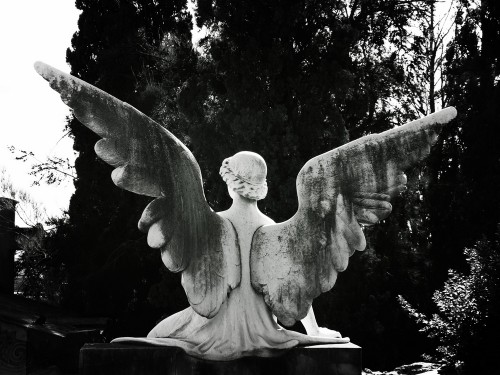
5
The sun sets for us all eventually, but to fall into melancholy is the same as to wildly try and fight it. They are both a form of indulging in death. The practice therefore, is to understand and accept, but let go of it, making life a beautiful thing.
The sun sets for us all eventually, but to fall into melancholy is the same as to wildly try and fight it. They are both a form of indulging in death. The practice therefore, is to understand and accept, but let go of it, making life a beautiful thing.
Start now to practice ways of improving the well being of your life. While the facts of life may cause of sorrow and despair, it still doesn’t need to be so. Some ways of many to improve your happiness and well being are listed as follows, but the practitioner should reflect again that without sincerity, it will be virtually impossible to come to terms and transcend the issues.
- Practice virtue. The innocent really do have nothing to fear.
- Practice investigative understanding. The wise likewise have nothing to fear as they know that we can hasten illness, unhappiness and injury by living carelessly.
- Practice appreciation. When we are unhappy with what we have, by valuing the many things that touch our hearts we balance out the dissatisfaction and we can build appreciation to make it of greater value.
- Practice goodwill or loving kindness. Not just to others but ourselves when we fell angry about how we cannot prevent death, or that there isn’t someone we can turn to to do it for us.
- Practice equanimity. This pulls us back into balance when we run off into fits of emotion. Equanimity is the great balancer.
- Practice compassion. Compassion finally reminds us that all beings are in the same boat, bound to the same wheel of life. Only when we understand how we are bound to it will we ever be free of it.
Complete Article HERE!
Getting back up again is living
This is what you shall do
“This is what you shall do;
Love the earth and sun and the animals,
despise riches, give alms to every one that asks,
stand up for the stupid and crazy,
devote your income and labor to others,
hate tyrants, argue not concerning God,
have patience and indulgence toward the people,
take off your hat to nothing known or unknown or to any man or number of men,
go freely with powerful uneducated persons and with the young and with the mothers of families,
read these leaves in the open air every season of every year of your life, re-examine all you have been told at school or church or in any book, dismiss whatever insults your own soul,
and your very flesh shall be a great poem
and have the richest fluency not only in its words
but in the silent lines of its lips and face and between the lashes of your eyes and in every motion and joint of your body.”
~ WALT WHITMAN Leaves of Grass
Last week in Grafton: a research story
Caring at end of life is an innovative research project that has a real interest in people who are supporting loved ones who have come home to die. We are interested in what you have to say as a friend, family member, neighbour, work mate, service provider and community member of a dying loved one.


